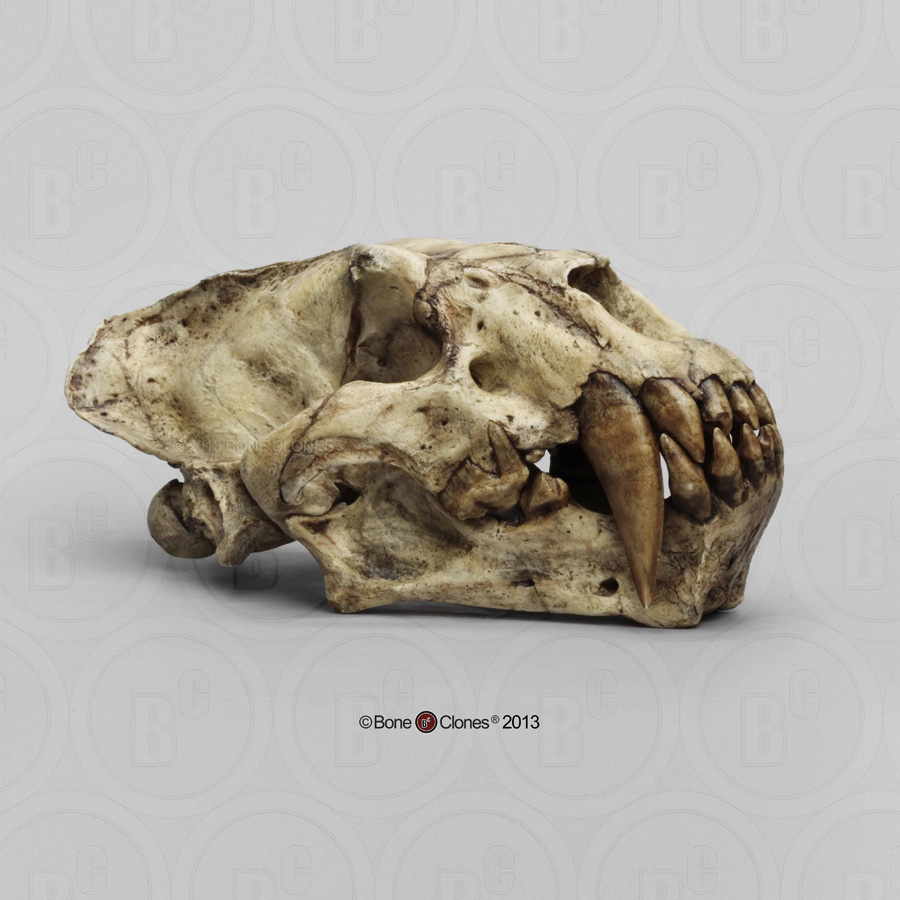 |
| A replica of the sabre toothed cat Xenosmilus hodsonae |
Sabre toothed cats are divided into two groups by the shape of their teeth. There are the cats with short sabres, properly known as 'dirk toothed,' and the cats with long teeth, the 'scimitar toothed.' However new fossils suggest there may be a third group. Xenosmilus hodsonae was discovered in the early 1980s in a gravel pit in north Florida by amateur palaeontologists. They originally thought that they had found the scull of a scimitar toothed cat and the body of a dirk toothed.
Yet analysis showed that they were from the same creature. A decade of study led a team from North Illinois University, headed by Dr Virginia Naples, to believe that this creature was a new species. However there was a problem. This creature was a cross between the dirk toothed and the scimitar toothed cats with a muscular body similar to the dirks and long, chunky teeth similar to the scimitars. In fact the name Xenosmilus means 'strange tooth.' Yet Naples and her research team continued to study this problematic, 1 million year old creature.
After two decades of intensive analysis, they came to the conclusion that Xenosmilus hid in tall grasses and bushes, ambushing its prey and dispatching it with a series of short, sharp, powerful bites to induce shock and blood loss. A close study of the skull revealed more details. After its large, chunky scimitar sabres, there was a gap before a series of tightly packed, oval teeth. Bite simulations showed that these canines would have grasped onto their prey.
The curving bite would have drawn the meat across and down the oval teeth behind, slicing off chunks in a manner similar to the tyrannosaurids. A large Xenosmilus killing ground was found, littered with the bones of ancient hogs displaying bite marks that fit the actions described by this hypothesis. This action led Naples to coin the generic group name of 'cookie-cutter cat.' As the flesh of the prey would have been rolled across the edge of the oval teeth in a manner similar to a circular cookie dough cutter.
The closing of the jaws would have sliced off a large bolus of meat in a very efficient process. Other cats would have bitten into the flesh and shaken their heads to rip off the food. This method uses the simple closing action of the jaws. This knowledge will allow palaeontologists to identify the distinctive bite marks of Xenosmilus and therefore establish the geographical range of this strange beast. 'It was really very exciting discovering the actual identity of this animal' Naples told the on-line journal LiveScience.